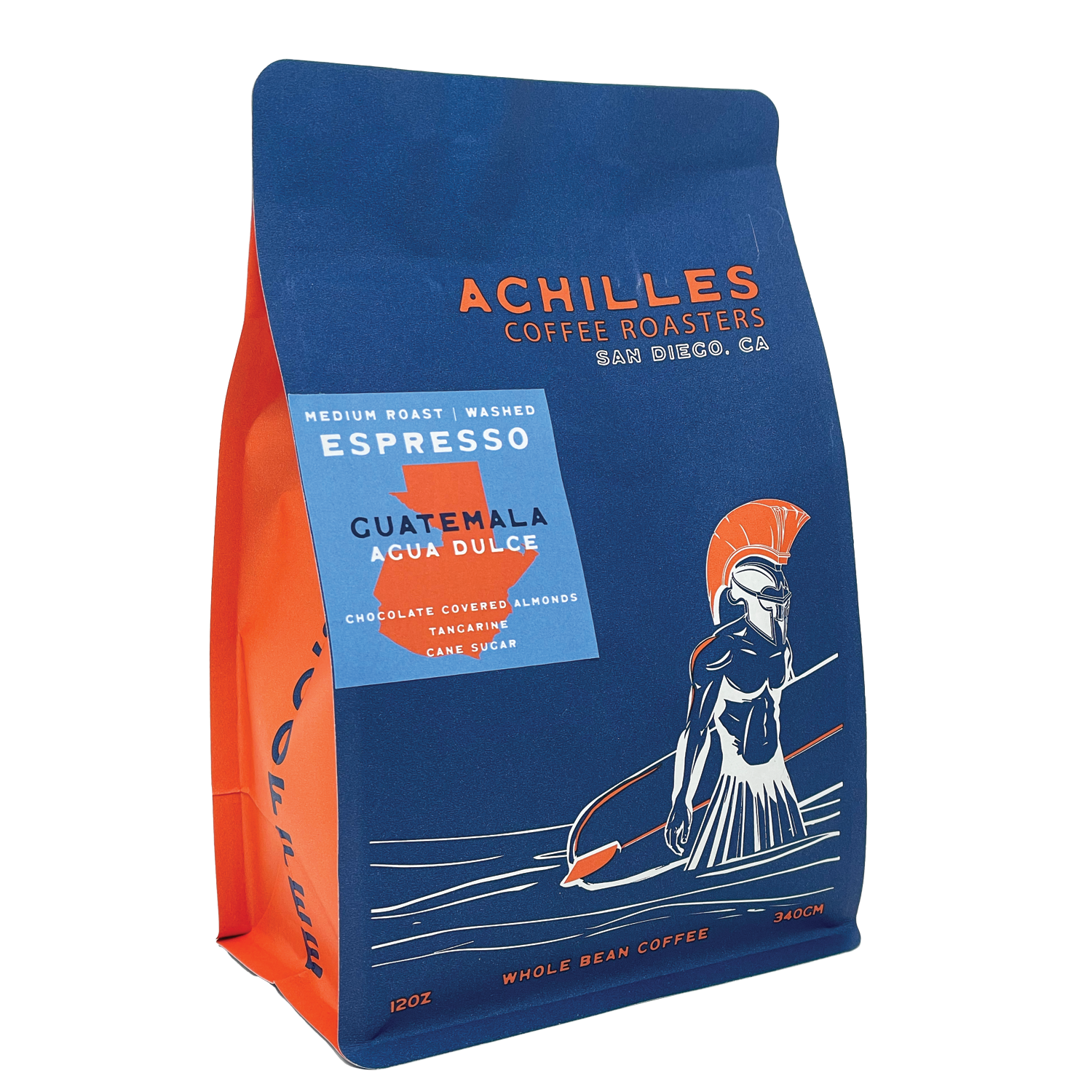Coffee Beans 101: Everything You Required to Learn About Espresso and Blended Coffee Beans
When it pertains to coffee, recognizing the nuances of espresso and mixed beans can transform your everyday mug. You'll find the distinct characteristics of Arabica and Robusta beans, and exactly how each impacts taste and caffeine material. From the growing procedure to roasting strategies, every action contributes in your coffee experience. What makes the excellent mixture? Allow's check out the vital elements that add to an outstanding cup of coffee.
Recognizing Coffee Beans: Ranges and types
When diving into the world of coffee, comprehending the types and ranges of coffee beans is vital for every enthusiast. You'll mostly encounter 2 primary varieties: Arabica and Robusta. Arabica beans are known for their smooth, complicated flavors and reduced caffeine material, making them a preferred among coffee aficionados. On the various other hand, Robusta beans pack a punch with a stronger, much more bitter taste and greater high levels of caffeine degrees, usually used in coffee blends.
Ethiopian Yirgacheffe offers brilliant floral notes, while Colombian beans supply a healthy taste profile. By acquainting on your own with these beans and their tastes, you'll raise your coffee experience and make even more enlightened selections in your brewing journey.
The Expanding Refine: From Seed to Bean
When you discover the trip of coffee, it all starts with seed choice techniques that set the structure for top quality. From there, cultivation and harvesting play necessary roles in ensuring the beans grow. Handling approaches change those harvested cherries right into the coffee beans you enjoy.
Seed Selection Techniques
Selecting the right seeds is vital for producing high-quality coffee beans, as it lays the foundation for the whole growing process. Pay interest to the seed's age and storage space problems, as fresh seeds often tend to germinate much better. Take into consideration the disease resistance of various selections, as this can greatly impact your return.
Growing and Harvesting
As you support your coffee seeds right into growing plants, understanding the farming and harvesting process is vital for achieving the ideal taste and high quality. Begin by growing your seeds in well-draining soil, preferably in a shaded area to safeguard them from direct sunlight.
Hand-picking is usually the ideal method to assure only the ripest cherries are chosen. Timing is important; harvesting also early or too late can impact the flavor account of your beans.

Handling Approaches Explained
As soon as you have actually collected your coffee cherries, the following vital action is refining them to change those vibrant fruits right into the beans you'll make. There are 2 primary methods: the completely dry procedure and the damp procedure. In the dry procedure, you spread the cherries out in the sunlight to dry, allowing the fruit to ferment and give one-of-a-kind flavors to the beans. On the various other hand, the damp process entails getting rid of the fruit quickly and fermenting the beans in water, resulting in a cleaner taste. After handling, the beans are hulled, arranged, and normally dried once again. Each approach affects the flavor account, so explore both can help you uncover your favorite mixture. Comprehending these approaches is vital to enjoying your coffee experience.
Toasting Strategies: Just How Taste Is Created
When it comes to roasting coffee beans, comprehending roast degrees is essential to exposing their special flavors. Each roasting technique effects the aroma and improves the flavor growth process, providing you a richer coffee experience. Allow's check out exactly how these factors integrated to boost your daily brew.
Roast Levels Described
Roast degrees play a crucial function fit the taste account of your coffee. When you select a light roast, you'll delight in intense level of acidity and fruity notes. As you transfer to a medium roast, you'll see an equilibrium of sweet taste and intricacy, often highlighting chocolate or caramel tastes. Dark roasts, on the various other hand, provide bold, great smoky features with less acidity, making them rich and robust. Each level results from different roasting times and temperatures, affecting the beans' chemical structure. By understanding these degrees, you can better choose a coffee that matches your taste preferences. Explore different roasts to find which one reverberates with you, enhancing your overall coffee experience and enjoyment.
Influence On Aroma
The roast level not only affects the taste of your coffee however also significantly affects its scent. When you pick a light roast, you'll commonly discover intense, flower notes that can make your coffee scent lively and fresh. As the beans darken, the aroma shifts; a medium roast draws out a lot more well balanced, caramelized scents, while a dark roast often tends to feature bold, great smoky undertones. Each toasting strategy releases different volatile compounds, shaping exactly how your coffee scents. In addition, the freshness of the beans plays a crucial duty; freshly roasted coffee releases much more aromatic oils, improving that enticing scent. So, take note of the roast level-- it's essential to exposing the full fragrant experience of your mixture.
Flavor Growth Process
As you discover the taste advancement process, you'll discover that toasting methods play an important duty fit the preference profile of your coffee. The toasting temperature level and time directly affect the level of acidity, sweetness, and bitterness of the beans. Light roasts preserve more of the bean's original flavors, highlighting floral and fruity notes. Tool roasts balance level of acidity and body, offering an all-around taste. Dark roasts, on the various other hand, bring out strong, smoky attributes while diminishing the bean's fundamental high qualities. During roasting, chain reactions, like the Maillard reaction and caramelization, transform the beans and enhance their complexity. Trying out various roasting levels can aid you locate your perfect mixture, so don't think twice to taste and uncover the abundant range of flavors!
Coffee vs. Blended Coffee: Secret Differences
Coffee and combined coffee each offer unique experiences that accommodate various tastes and choices. Espresso is a focused coffee made by requiring warm water with finely-ground coffee beans, causing an abundant, bold taste and a velvety layer of crema on the top. It's frequently delighted in as a shot or made use of as a base for drinks like cappuccinos and lattes.
On the various other hand, blended coffee integrates different beans from different regions, creating a much more well balanced flavor account. You'll often discover blends that highlight body, level of acidity, or sweetness, making them flexible for various developing approaches. While coffee focuses on strength, blended coffee may supply a more comprehensive series of tastes that can alter with each sip.
Ultimately, your selection between coffee and combined coffee come down to your individual choice. Whether you crave a leisurely cup or a quick jolt, both choices have something tasty to supply.

Developing Techniques: Unlocking the Perfect Mug
When it involves developing coffee, discovering the right approach can change your experience and boost your cup. Each brewing technique has its special beauty and can greatly influence your coffee's taste and fragrance. For instance, making use of a French press allows you to delight in a rich and full-bodied mixture, while a pour-over method offers a tidy, intense mug with distinctive flavors.
If you choose espresso, buying a top quality machine can help you master the art of drawing shots. Alternatively, for comfort, a single-serve skin system provides rate without giving up preference.
Do not ignore chilly mixture, which provides a smooth, much less acidic coffee perfect for hot days. Explore different methods to find what resonates with your taste. Each developing method opens up a brand-new globe of possibilities, so take the time to explore and locate your best mug. Happy developing!
Sampling Notes: Recognizing Taste Profiles
Just how can you absolutely appreciate your coffee if you do not recognize what flavors to look for? Sampling notes are your overview to comprehending the complicated globe of coffee. Some coffees might leave a chocolatey or caramel aftertaste, while others might have a brilliant, clean coating.
Consider the body of the coffee, as well; is it light and ventilated Continued or thick and syrupy? Don't neglect acidity; a brilliant acidity can add liveliness, while a reduced level of acidity may offer a smoother experience. look these up By identifying these flavor accounts, you'll strengthen your link with each cup, making coffee sampling a wonderful trip of exploration.

Tips for Choose and Storage Coffee Beans
Selecting and storing coffee beans properly can greatly boost your brewing experience. Begin by choosing high-grade beans that suit your taste. Seek freshness; beans roasted within the last 2 weeks are ideal. Check the roast day on the packaging, and get from reputable roasters or regional stores.
As soon as you have your beans, keep them in a closed container to stop exposure to light, dampness, and air. A dark, trendy location works best, so stay clear of keeping them in the fridge or fridge freezer, as this can introduce wetness. Only grind the amount you require to maintain quality; entire beans keep flavor longer than pre-ground coffee.
Lastly, try to use your beans within 2 to 4 weeks after opening up for peak taste. Complying with these tips will certainly guarantee your coffee remains tasty and delightful, raising your everyday brew to new heights.
Frequently Asked Questions
How Long Do Coffee Beans Remain Fresh After Toasting?
Coffee beans remain fresh for concerning two weeks after toasting - SOE. You must keep them in an airtight container, far from light and moisture. After that, their flavor and scent begin to reduce considerably

Can I Mix Different Coffee Bean Varieties?
Definitely, you can blend different coffee bean varieties! Exploring with blends can enhance tastes and create a special taste account. Just make certain to balance the staminas and qualities of each selection for the finest outcomes.
What Is the Ideal Grind Dimension for Coffee?
For espresso, you'll want a fine grind dimension, about the texture of common salt. This allows ideal removal, leading to a rich, delicious shot. Experiment a little bit to discover what fits your taste best!
Exactly How Does Elevation Affect Coffee Bean Taste?
Elevation influences coffee bean taste by affecting the growth price and chemical make-up. Higher altitudes cause slower growth, which boosts acidity and complexity, providing your coffee a dynamic and distinct preference you won't neglect.
Are There Decaffeinated Versions of Espresso Beans?
Yes, there are decaffeinated versions of coffee beans. You can delight in a rich espresso flavor without the caffeine kick. Just try to find "decaf" blends at your local coffee bar or specialized store.
Coffee Beans 101: Whatever You Need to Know Regarding Espresso and Blended Coffee Beans.
When diving into the globe of coffee, comprehending the kinds and varieties of coffee beans is vital for every fanatic.When it comes to roasting coffee beans, understanding roast degrees is essential to disclosing their distinct tastes. Coffee is a focused coffee made by requiring warm water through finely-ground coffee beans, resulting in a rich, vibrant taste and a creamy layer of crema on top.On the other hand, blended coffee incorporates numerous beans from various regions, producing a more you can check here well balanced taste account.